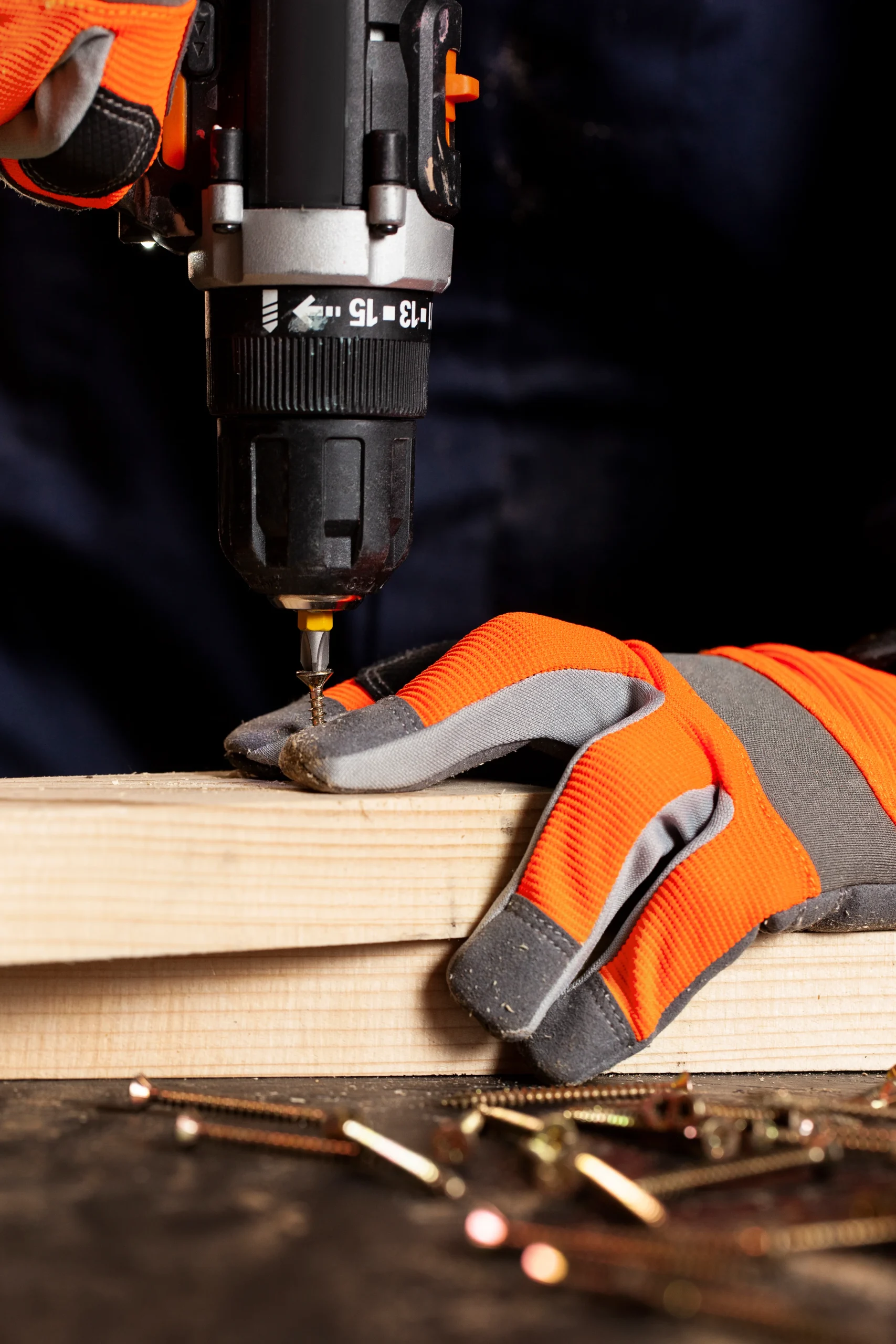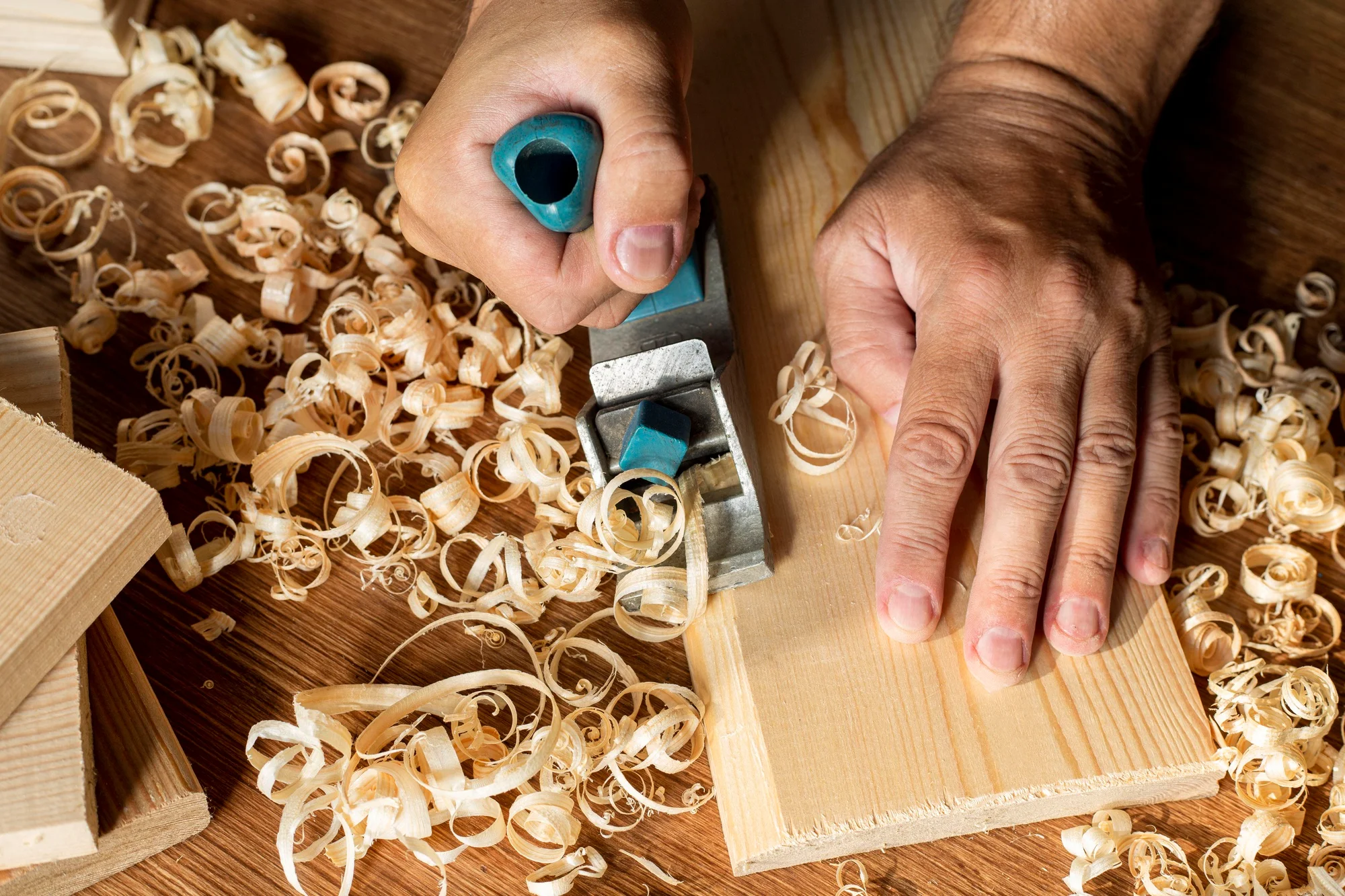
Our Blog

How to Future-proof your Woodworking Business
In today’s ever-changing marketplace, future-proofing your woodworking business is no longer optional, it’s essential. This means taking proactive steps to ensure your business remains relevant, competitive, and successful for years to come. Sustainability, continuity planning, and adherence to industry standards are all crucial factors in achieving long-term success. Let’s explore these strategies in detail to help you secure the future of your woodworking business.
1. Embrace Sustainability in Your Woodworking Business
The demand for eco-friendly products is stronger than ever. By incorporating sustainable practices, you’ll not only attract environmentally conscious customers, but also benefit from long-term cost savings.
Sustainable Materials and Practices
Incorporating sustainable materials and practices is crucial for future-proofing your woodworking business. By prioritizing eco-friendly and renewable resources, minimizing waste, and exploring innovative alternatives, you can reduce your environmental footprint while appealing to a growing market of environmentally conscious consumers. Let’s delve into some practical ways to integrate sustainability into your woodworking operations.
Source Responsibly
Use eco-friendly and renewable materials like Forest Stewardship Council (FSC)-certified wood. FSC certification ensures responsible forestry practices, minimizing environmental impact and protecting valuable ecosystems.
Minimize Waste, Maximize Creativity
Implement waste reduction strategies throughout your woodworking process. Careful lumber selection, optimized cutting techniques, and proper planning can significantly reduce scrap wood. Embrace the “waste-not” mentality! Explore creative ways to utilize leftover materials:
- Use sawdust for packing materials, compost (depending on the type of wood), or even wood putty alternatives.
- Turn small scraps into beautiful mosaic pieces for furniture accents, decorative boxes, or coasters.
- Consider partnering with local schools or art programs to donate usable scrap wood for creative projects.
Embrace Sustainable Alternatives
Look beyond traditional materials. Explore reclaimed wood from salvaged architectural elements or deconstructed furniture. This adds a unique character to your projects while giving new life to discarded materials. Additionally, consider using fast-growing, renewable bamboo or composite materials made from recycled content when appropriate for the project.
By adopting these practices, you not only become a more environmentally responsible business, but you can also discover creative new applications for leftover materials, potentially reducing costs and adding a unique touch to your work.
2. Develop a Comprehensive Woodworking Business Continuity Planning
The world of woodworking isn’t immune to unexpected events. A global supply chain disruption, a local natural disaster, or even an economic downturn can throw a wrench into your perfectly crafted plans. However, by developing a comprehensive business continuity plan, you can navigate these challenges with minimal disruption and ensure your business remains strong.
Here’s a breakdown of the key steps to building your plan:
Risk Assessment
The first step is to identify potential threats that could impact your business. Think broadly. This could include disruptions in the supply chain for critical materials, economic downturns affecting customer demand, or even a natural disaster damaging your workshop. Evaluate the potential impact of each risk on your operations (production delays, employee safety), workforce (absenteeism, morale), and finances (lost revenue, repair costs).
Emergency Preparedness
Once you understand your vulnerabilities, develop a detailed emergency response plan outlining specific actions for various scenarios. For example, the plan for a supply chain disruption might involve identifying alternative suppliers or exploring material substitutions. In case of a natural disaster, the plan would prioritize employee safety, securing the workshop, and minimizing damage to equipment and inventory. Train all your employees on the plan and conduct regular drills to ensure everyone knows their roles and responsibilities in the event of an emergency.
Financial Contingency Plans
Financial disruptions can be particularly damaging to a small business. Establish a financial reserve to cover unexpected expenses that might arise due to unforeseen events. This could include covering payroll during a temporary production shutdown or repairs after a natural disaster. Review your insurance policies regularly to ensure you have adequate coverage for potential disruptions. Consider additional insurance options like business interruption insurance to provide additional financial protection.
By taking these proactive steps and building a robust continuity plan, you can ensure your woodworking business is well-equipped to weather any storm and emerge even stronger.
3. Build Trust and Confidence by Adhering to Architectural Woodwork Standards
In the competitive world of architectural woodwork, reputation is everything. Clients rely on you to deliver projects that are not only aesthetically pleasing but also structurally sound and built to last. This is where adhering to Architectural Woodwork Institute (AWI) standards becomes a powerful tool for your business.
A Seal of Quality
The AWI is a highly respected non-profit organization dedicated to promoting excellence in architectural woodwork. Their comprehensive architectural woodwork standards set the bar for quality craftsmanship, ensuring projects meet the highest industry benchmarks. By adhering to these standards, you demonstrate a commitment to professionalism and provide your clients with the peace of mind that comes with knowing their project is in the hands of a skilled and qualified craftsperson.
Understanding the AWI Standards
AWI standards encompass a wide range of aspects crucial for successful architectural woodwork. These include:
- Material Selection – Guidelines ensure you use appropriate wood species, hardware, and adhesives for the specific project requirements, guaranteeing long-term durability and performance.
- Joinery Techniques – The AWI standards outline proper joinery methods that create strong, reliable connections between wood components, ensuring the structural integrity of the finished piece.
- Finishing and Installation – Detailed specifications for finishing techniques and installation procedures guarantee a professional aesthetic and ensure the woodwork is properly integrated with the surrounding architecture.
Following these standards not only minimizes the risk of defects but also streamlines your workflow by providing a clear roadmap for each project. This translates to improved efficiency, reduced rework, and ultimately, a higher quality product for your clients.
Showcase Your Commitment to Excellence
While adhering to AWI standards is a powerful differentiator, taking it a step further through AWI licensing programs allows you to formally demonstrate your commitment to excellence. This rigorous process evaluates your shop’s capabilities, craftsmanship, and quality control procedures. Earning an AWI license signifies your dedication to the highest industry standards and sets you apart from the competition.
By consistently meeting or exceeding AWI standards, you build trust and confidence with your clients, attracting more high-profile projects and solidifying your position as a leader in the architectural woodworking industry.
4. Embrace the Future By Powering Up with Technology and Innovation
The world of woodworking is no stranger to tradition and time-tested techniques. But in today’s competitive landscape, embracing innovation is no longer a luxury, it’s a necessity. By strategically integrating modern tools, software, and a growth mindset, you can revolutionize your woodworking processes, boost efficiency, and position your business for long-term success.
Modernize Your Workshop
Gone are the days when advancements were limited to the latest chisel or ingenious jig. Today, a new wave of technology is transforming woodworking:
- CNC Machines – Embrace the precision and efficiency of Computer Numerical Control (CNC) machines. These versatile tools can handle intricate cuts, repetitive tasks, and complex joinery with unmatched accuracy, freeing you to focus on the creative aspects of your work.
- Advanced Dust Collection Systems – Invest in a robust dust collection system to ensure a cleaner, healthier work environment. Improved air quality not only protects your lungs and those of your employees but also reduces the risk of explosions from accumulated sawdust.
- Efficient Joinery Tools – Explore innovative joinery tools that simplify complex techniques and ensure consistent, high-quality results. Pneumatic clamps, dowel jointers, and specialized hardware can significantly streamline your workflow.
- 3D Printing for Prototyping and Design – Consider incorporating cutting-edge 3D printing technology. This allows you to create physical prototypes for client visualization and design iteration, minimizing the need for time-consuming wood mockups.
Streamline Your Workflow with Software and Automation
The digital revolution extends beyond the shop floor. Investing in the right software can boost your efficiency and productivity:
- Design Software – Utilize design software like CAD (Computer-Aided Design) programs to create detailed plans, generate material lists, and visualize projects in 3D.
- Project Management Software – Implement project management software to streamline communication, track deadlines, and manage resources effectively.
- Inventory Control Software – Gain real-time visibility into your inventory with dedicated software. This helps eliminate stockouts, optimize material purchases, and minimize waste.
Embrace Continuous Learning
Technology is constantly evolving, and the woodworking industry is no exception. Staying ahead of the curve requires a commitment to continuous learning:
- Stay Updated on Industry Trends – Actively seek out information on the latest advancements and emerging technologies in your field. Attend industry trade shows, workshops, and online forums to stay informed.
- Invest in Training – Encourage your employees to participate in training programs to develop their skills in using new tools and software. This fosters a culture of innovation and ensures everyone is on board with the latest advancements.
By embracing technology and fostering a culture of continuous learning, you can transform your woodworking business from a traditional craft to a future-proofed enterprise. Let innovation be your chisel, carving a path towards a more efficient, competitive, and ultimately, more rewarding woodworking journey.
5. Craft Your Digital Presence
In today’s digital age, your online presence is your storefront window to the world. It’s where you can showcase your skills, connect with potential clients, and establish yourself as a leader in the woodworking industry. Here’s how you can craft a compelling digital presence that attracts new customers and fuels your business growth:
Build a User-Friendly Website
Your website is the cornerstone of your online presence. Think of it as your digital workshop, a space to showcase the artistry and expertise you bring to every project. Here’s what your website should offer:
- Professional Design and User Experience – First impressions matter. Invest in a website that is visually appealing, easy to navigate, and mobile-friendly. High-quality photos and clear calls to action are essential for keeping visitors engaged.
- Compelling Portfolio – Let your work speak for itself. Feature a well-curated portfolio showcasing your range of skills and the beauty of your finished pieces. Consider including client testimonials to add social proof and build trust.
- About Us and Contact Information – Tell your story! Craft a compelling “About Us” section that introduces your woodworking journey, values, and what sets you apart. Make sure your contact information is prominently displayed and easily accessible.
Expand Your Reach
If you produce handcrafted furniture, decorative items, or other sellable pieces, consider adding an e-commerce platform to your website. This allows you to reach a wider audience and sell your work directly to customers, potentially increasing your revenue streams.
Engage with Your Audience
Social media platforms are powerful tools for connecting with potential clients, showcasing your work in progress, and establishing yourself as a thought leader in the woodworking industry. Here are some strategies to maximize your social media presence:
- Choose the Right Platforms – Focus on platforms where your target audience spends their time. This might be Instagram for showcasing visual content, Facebook for fostering community, or Pinterest for reaching DIY enthusiasts.
- Create Engaging Content – Don’t just post pictures of finished products. Share project updates, behind-the-scenes glimpses into your woodworking process, or educational content like tips and techniques. Experiment with video tutorials, live streams, and interactive polls to keep your audience engaged.
- Utilize Hashtags and Paid Advertising – Strategic use of relevant hashtags can increase your discoverability. Consider employing paid advertising options to target your ideal customer base and maximize the reach of your content.
Customer Engagement and Building Relationships
Building trust and fostering long-term relationships are key to online success. Encourage customer reviews and testimonials on your website and social media platforms. Respond promptly to inquiries, and provide excellent customer service to build lasting connections. This not only keeps your existing customers happy but also encourages positive word-of-mouth marketing.
By following these strategies, you can craft a compelling digital presence that attracts new customers, showcases your woodworking artistry, and positions your business for long-term success in the ever-evolving online landscape.
Conclusion
Future-proofing your woodworking business involves a multifaceted approach that includes embracing sustainability, developing continuity plans, adhering to industry standards, investing in technology, and maintaining a strong online presence. By implementing these strategies, you can ensure long-term success and resilience in the woodworking industry.
Recent Post

How to Choose the Best Woodworking Compass: Expert Tips and Tricks

Screw Gun vs Drill: What Every Woodworker Needs to Know

Woodworking PPE Checklist: Are You Fully Protected?

Green Woodworking 101: A Beginner’s Guide to Crafting with Unseasoned Wood



